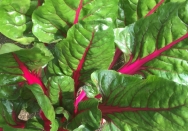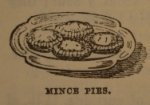Diaries and journals are a wonderful source of detail in reconstructing past lives. Writing in the 1830s and 40s, the young Annabella Boswell recorded Christmas at Lake Innes. In her diaries we read of puddings and roast beef, cakes and shortbread, decorations – and of a drink that was the precursor to egg-nog, itself a drink that we may never have tried but have all heard of at Christmas time.
Together with her mother Annabella moved to Lake Innes in 1843. Her aunt, who had married Archibald Innes, was a daughter of Alexander Macleay of Elizabeth Bay House. Over the following years she wrote about all facets of their daily life; her description of Christmas in 1850 includes a note on decorations, which was substantially of fresh greenery collected from the bush and piled on mantles, laid over picture frames, hung in light fittings and attached to door frames. The same decorations were used at Elizabeth Farm, Elizabeth Bay House, Vaucluse and any number of other colonial houses of the 1830s and 40s.
A Christmas account
St Clair, December 1850 – My dear Margaret, since my last letter … was posted we have had a very merry Christmas, and I hope there is a happy New Year in store of us. On Monday 23rd, we were all up early, and Aunt Anna saw that their rooms were ready and everything in order for the reception of our schoolboys. I made some shortbread and got ready the plums for the mince pies, and all the other ingredients for them and for the sponge cakes, and delivered them to James (the cook) who has made all the cakes this year, and does it very well.
She goes on to describe the preparations on the day, the making of the puddings, and of local aboriginal people who also enjoyed the feasting:
We had just finished dinner when I heard a cry of “they are coming” and, rushing out, met George at the door, and Robert Willis. It was quite an hour before the rest of the party made their appearance – I see very little change in the boys, except that they had grown. All are looking well: John is as fat as ever, and he is the most persevering in setting traps for birds and knocking them down again – Lorn and he are mighty hunters: Arthur is perhaps the most improved, and contented to be sometimes in the house….
She makes no mention of a Christmas tree as these were a tradition not yet seen outside of German houses.
We dined in the schoolroom which had been decorated with green boughs and was really very cool – but the weather is cooler than I ever remember it at this season.On Christmas morning it was really very chilly. I was up before 5 o’clock – not because I had anything to do; I did not even witness the making of the plum pudding but I was chief maker of the “Old Mans Milk”, and saw Margaret [Innes, nee Macleay, her aunt] up to her elbows in mixing a large plum pudding for the blacks, who had a grand dinner of roast beef and plum pudding laid out in a shed they had made with green boughs near the rabbit-house. There were sixteen of them altogether and they seemed to enjoy themselves very much.
“A nutritious and pleasant beverage”
The “Old Man’s Milk” that Annabella was in charge of making was a milk-based ‘punch’, made with brandy and eggs. It was an old recipe, often mentioned as popular with travelers (or hunting parties) needing a warming pick-me-up. Maria Rundell – an author well known for her “New system of domestic cookery” first published in 1805 – provides a recipe that like so many early cookbooks relies on experience in determining quantities:
‘TO MAKE OLD MAN’S MILK
– a nutritious and pleasant Beverage. Beat up the yolk, of an egg in a bowl or bason, and then mix with it some cream or milk, and a little sugar, according to the quantity wanted, and let them be thoroughly incorporated. A glass of spirits, or more, is to be then poured gradually into the mixture, so as to prevent the milk or cream from curdling. This mixture will be found useful to travellers who are obliged to commence their journey early, particularly if the weather be cold and damp.
The New Family Receipt Book: Containing Eight Hundred Truly Valuable receipts in various branches of domestic economy. London, John Murray, 1822, page 201
It was also called a “milk punch” . Eliza Acton provides this recipe for a drink named for the hallowed halls of learning (she also provides an “Oxford Punch”). As written it makes quite a lot, but then punch was made as a celebratory drink in large quantities to be enjoyed by a group;
CAMBRIDGE PUNCH
Ingredients: 2 qts new milk [2.3 ltrs] rind 1 large lemon; 2 fresh eggs; ½ pint [approx 300mls] cold milk; 1 pint rum [600mls]; ½ pint brandy [300mls].
Throw into two quarts of new milk the very thinly pared rind of a fine lemon, and half a pound of good sugar in lumps [ie freshly broken off a sugar cone]; bring it slowly to boil, take out the lemon rind, [with]draw it from the fire and stir quickly in a couple of well-whisked eggs which have been mixed with less than half a pint of cold milk, and strained through a sieve; the milk must not of course be allowed to boil after these are mixed with it. Add gradually a pint of rum, and half a pint of brandy; mill [whisk vigorously] the punch to a froth and serve it immediately with quite warm glasses.
Modern Cookery for Private families, 1845.
She adds that the sugar and spirits should be apportioned to taste, and that a richer drink is made using just the yolks of 3 or 4 eggs, rather than 2 whole eggs. Remember to whisk steadily when adding the egg mix to the warm milk.
Sounds a bit familiar?
When you read these recipes you’re probably thinking of its familiar modern variant – ‘egg nog’ – which is usually made with rum rather than brandy, with cream as well as milk, and garnished with cinnamon or nutmeg. While egg nog – a name whose origins are disputed but which is most likely American – also began as a nourishing drink for travelers, today it is strongly associated with Christmas and can even be bought as a ready made “just add alcohol” mix in supermarkets. A quick survey around our office however showed that while everyone had heard of it as a drink and all associated it with Christmas, only two have actually tried it, and that was in Britain and America. Most likely a hot Australian summer makes it less attractive as a festive drink.
When ‘Egg-nog’ first appears in Australian newspapers it is clearly referenced as an American drink alongside ‘cocktails’: “The Omeo is yet in happy ignorance of the many peculiar drinks which have been introduced from the Land of Stars and Stripes into Melbourne, and thence found their way as far as the Ovens, bearing such euphonious names as ” Egg nog,” ” Cocktail,” ” Spider,” “Tom and Jerry,” &c…” (The Ovens and Murray Advertiser, 6th October, 1857). Omeo, a town in eastern Victoria, was then a gold mining district; this and a reference from a Ballarat hotel advertisement demonstrate how the drink came come across the Pacific with Californian miners in search of their fortunes during the Gold Rush:
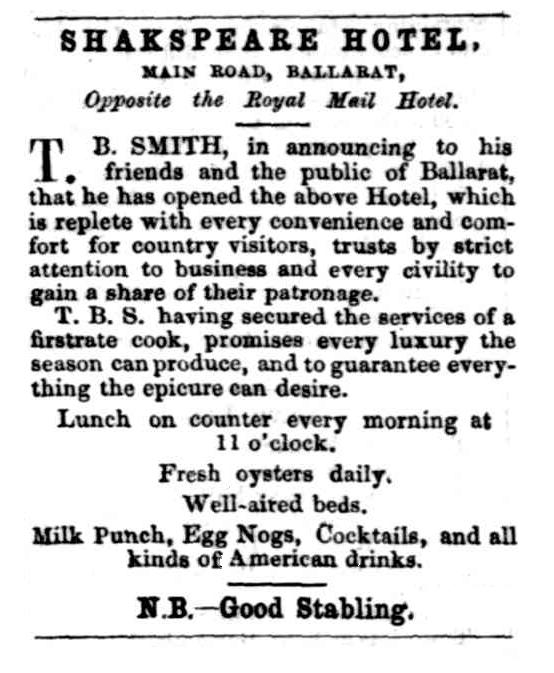
Advertisement for the Shakespeare Hotel, Ballarat, with references to milk punch and egg-nog, The Star, 20 Sep 1856, page 3, viewed 18 Dec 2013, http://nla.gov.au/nla.news-article66039537
Egg-Nog: a Christmas Drink
ICED EGG-NOG: Ingredients. — Crushed Ice, little nutmeg, 1 egg, 1 glass of brandy, Mode,— Beat the egg well; put in the tumbler with the sugar and brandy; stir all together well, fill the tumbler with crushed ice, grate a little nutmeg on top; serve with a straw. From ‘For Ladies’, The Daily News, 1907.
By the early 1880s however the drink was commonly available, and was no longer labelled “American” at every mention. Iced egg-nog was a popular variant served in tea-houses, a sensible concession to the climate: “When in Sydney I noted ladies going by the score for it.. they did a roaring trade” wrote one journalist in 1896. This suitably named no-nonsense non-alcoholic version concentrated on the drink’s nutritional value: “Temperance egg-nog: Beat one egg thoroughly in a deep bowl, add two spoonfuls of sugar, a spoonful of lemon, vanilla, or rose, and fill up with milk. Have the milk hot, if liked, or serve very cold. This is often given to the sick when they gain strength slowly” (Morning Bulletin, 28 April, 1897). Many recipes were actually provided for invalids, and Ive come across one 1950s article on the attempt to create powdered egg nog for hospitals (seriously!). This rather Dickensian-toned poem that links egg nog to Christmas is from 1883:
Christmas
Old Christmas comes but once a year,
if you’ve got no money, you can’t buy beer;
If you’re broke, you may whistle all day for grog
For fruit-cake, pie and the sweet egg-nog,
You may sigh for a toothsome turkey-bone,
If you sit in a darksome room alone,
For the world is cold, and of humbug made,
And begrudges the pauper’s grave a spade.Yes Christmas comes but once a year,
And if you have money you’ll have good cheer
You can pledge your friends in the wine so red,
Get happy and glorious and go to bed,
And dream of the toothsome turkey bone,
and the brilliant lights which o’er it shone,
For the world is warm and kind and soft,
And will weep when grim death calls you aloft.(Newcastle Morning Herald and Miner’s Advocate, 21 December 1883.)
Chilled egg-nog
Ingredients
- 6 eggs
- 1 cup sugar
- 1/2 teaspoon vanila extract
- 300ml dark rum or brandy
- 2 cups cream
- 2 cups milk
- nutmeg, freshly grated
Note
This recipe can be prepared in advance, but will need to be re-whisked before serving to ensure the ingredients haven't separated and it has a light consistency.
If you'd prefer to make a traditional warmed egg-nog, heat the rum, cream and milk until it just reaches a simmer, then immediately remove from heat. Whisk into the eggs and sugar mixture, being sure not to let the eggs 'cook' or curdle in the hot liquid.
Directions
| Whisk the eggs, sugar and vanilla until light and frothy and sugar has dissolved (use electric beaters if you have them) | |
| Stir in the rum or brandy, then using a wire whisk, beat in the cream and milk until fully mixed and light. Place in fridge until very cold. | |
| To serve, re-whisk to ensure the mix is light and airy. Pour into tall glasses, and grate or sprinkle a light dusting of nutmeg over the top of each. | |
Discover more
You can read about life at Lake Innes, and the archaeological excavation there, at this intriguing site by the National Museum of Australia
You can read more about colonial Christmas decorations here
Sources
Eliza Acton. Modern Cookery for Private Families. Southover Press, 2002 (first published in 1845). This reproduction is a reprint of the extended edition of 1855 as edited by Eliza Acton.
Maria Rundell. The New Family Receipt Book: Containing Eight Hundred Truly Valuable receipts in various branches of domestic economy. (London, John Murray, 1822 P201
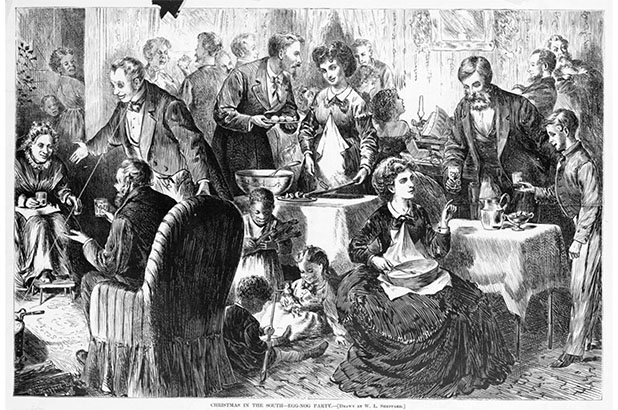
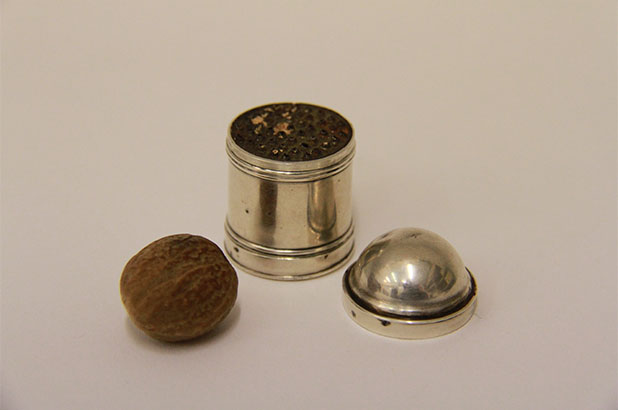
 Print recipe
Print recipe